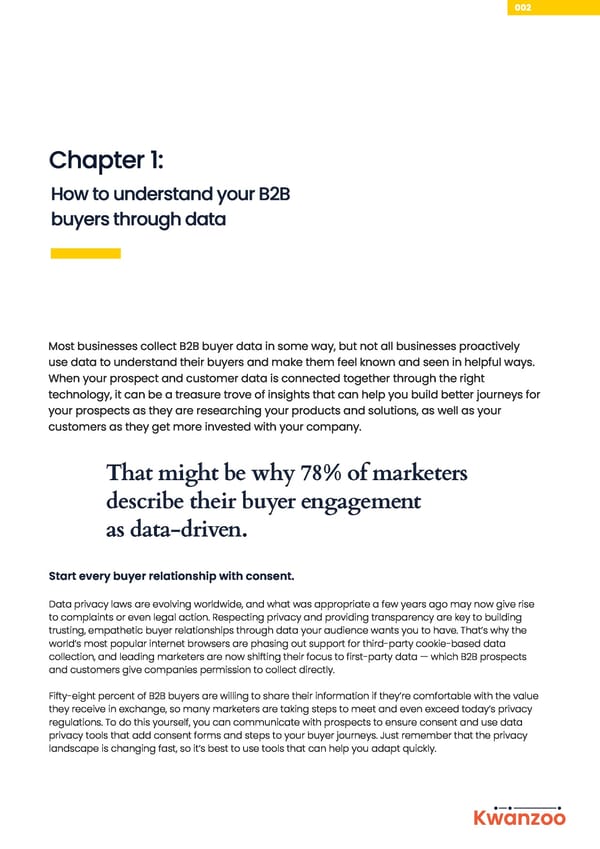002 Chapter 1: How to understand your B2B buyers through data Most businesses collect B2B buyer data in some way, but not all businesses proactively use data to understand their buyers and make them feel known and seen in helpful ways. When your prospect and customer data is connected together through the right technology, it can be a treasure trove of insights that can help you build better journeys for your prospects as they are researching your products and solutions, as well as your customers as they get more invested with your company. TThhaatt mmiigghhtt bbee wwhhyy 7788%% ooff mmaarrkkeetteerrss ddeessccrriibbee tthheeiirr bbuuyyeerr eennggaaggeemmeenntt aass ddaattaa--ddrriivveenn.. Start every buyer relationship with consent. Data privacy laws are evolving worldwide, and what was appropriate a few years ago may now give rise to complaints or even legal action. Respecting privacy and providing transparency are key to building trusting, empathetic buyer relationships through data your audience wants you to have. That’s why the world’s most popular internet browsers are phasing out support for third-party cookie-based data collection, and leading marketers are now shifting their focus to first-party data — which B2B prospects and customers give companies permission to collect directly. Fifty-eight percent of B2B buyers are willing to share their information if they’re comfortable with the value they receive in exchange, so many marketers are taking steps to meet and even exceed today’s privacy regulations. To do this yourself, you can communicate with prospects to ensure consent and use data privacy tools that add consent forms and steps to your buyer journeys. Just remember that the privacy landscape is changing fast, so it’s best to use tools that can help you adapt quickly. Kwanzoo
 4. Data Driven Advertising Page 2 Page 4
4. Data Driven Advertising Page 2 Page 4